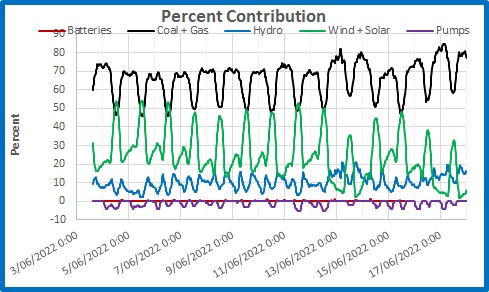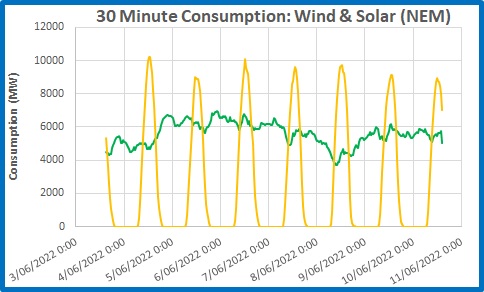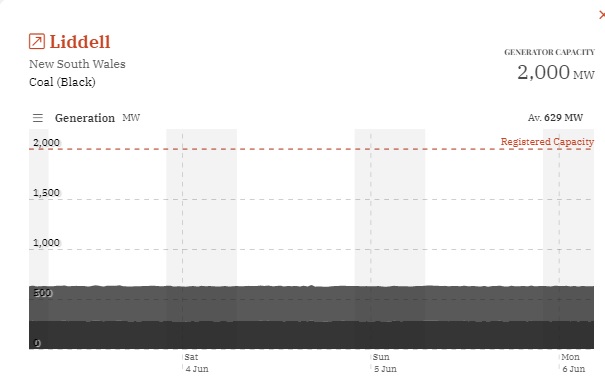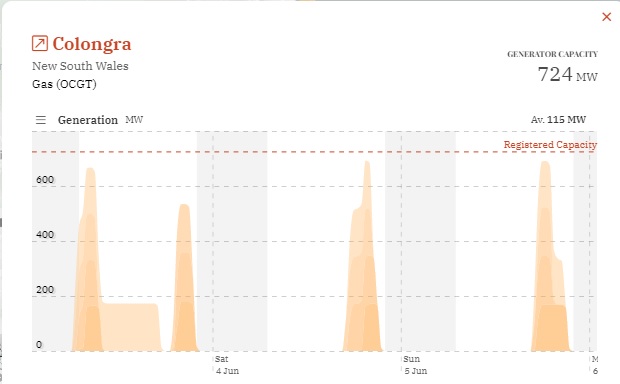The energy crisis seems to be ongoing- the new normal apparently. Is it the fault of old, rundown coal fired power stations with breakdowns? Is it the fault of greedy, profit hungry energy suppliers gaming the system? Is it the fault of the Ukraine war pushing up coal and gas prices? Is it the fault of the previous coalition government for not having the correct climate policy, resulting in not enough investment in renewables? Or all of the above?
Nope.
Breakdowns last week in under-funded power stations didn’t help, nor a shortage of high priced coal and gas. And you can’t blame companies wanting to keep their income above their costs.
But no amount of climate ambition, and no possible amount of renewable capacity, could have averted the problems we’ve had last week and are likely to continue to have.
Figure 1 shows our electricity consumption for the two weeks from 3rd to 17th June.
Figure 1: All NEM electricity consumption 3- 17 June
Coal is the heavy lifter.
Figure 2 shows the main energy sources as a percentage of the total usage.
Figure 2: All sources as a percentage of NEM electricity consumption 3- 17 June
Note again it is coal followed by daylight- and I don’t mean solar! Note also that coal’s relative contribution increased despite breakdowns and supply difficulties.
The next plot shows the percentage contribution of fossil fuels and all non-fossil sources- batteries, hydro, wind and solar. I’ve also included the negative contribution of pumped hydro, when dams are refilled using excess electricity- except on 13th and 14th when it was too expensive.
Figure 3: Fossil and non-fossil generation as a percentage of consumption
Renewable energy advocates like averages- they hide a multitude of sins. Here are the averages of all sources for each 30 minutes of the day for the last two weeks:
Figure 4: Average 30 minute NEM electricity consumption 3- 17 June
Coal varies between 12,000 and 16,000 MW per half hour as it responds to the twice daily peaks in demand, and the daily peak in solar output. Solar is useless for meeting baseload around 4:00 a.m., or either of the daily peaks. Wind averages a touch over 4,000 MW all day so is also no help with extra demand. Battery discharge at peak times can barely be seen. Gas and hydro vary at similar rates to meet demand when needed, though gas output remains higher throughout the night.
How reliable was wind generation, which averaged over 4,000 MW per half hour? Here is a plot of actual wind generation at 30 minute intervals from 3 June to 17 June:
Figure 5: Actual wind generation 3- 17 June for each half hour
“Fickle” is not an adequate description.
Of course renewables can provide 18,000 MW at maximum capacity- but at the wrong time of the day. When the need was greatest, they could provide only 6,880 MW- and 90% of that was hydro.
Our entire electricity generation, including fossil generation, depends on the reliability or otherwise of renewable generation.
Our energy crisis last week was not caused by breakdowns, fossil fuel prices, greedy power companies, coalition governments, or lack of investment in renewables.
It was caused by a lack of wind.
Figure 6: Actual wind generation 3- 17 June
We are hostages to the weather. Bob Dylan was right. The answer is blowin’ in the wind.
(Source: OpenNEM)




































